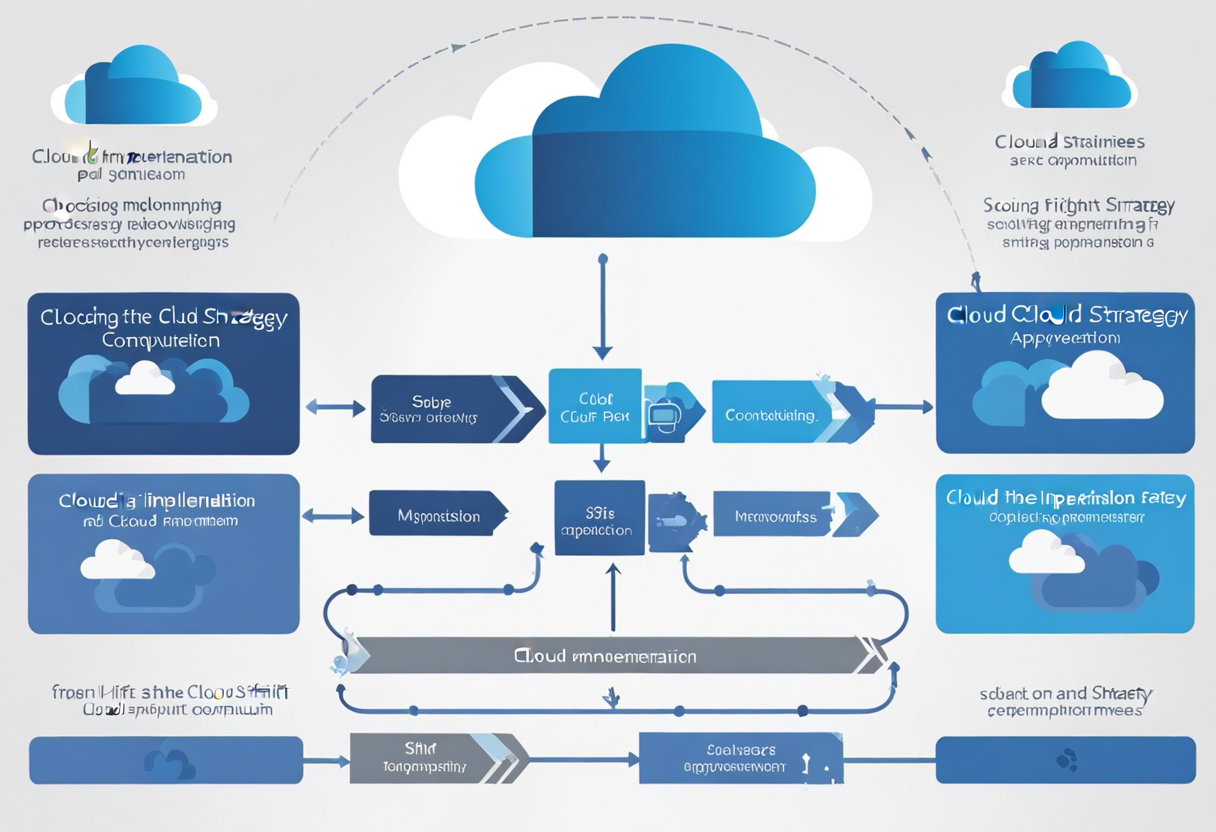Mastering Cloud Computing: Elevating Implementation Management and Security - A Top 5 Guide
Understanding the very basics of cloud computing is pivotal before diving into more complex aspects of implementation and management. Cloud computing is a model for delivering information technology services where resources are retrieved from the internet through web-based tools and applications. Businesses are opting for the cloud due to its myriad of advantages like scalability, cost-effectiveness, and accessibility. As a fundament, it's essential to familiarize yourself with different cloud service models (IaaS, PaaS, SaaS) and deployment models (Public, Private, Hybrid, and Multi-cloud).
Cloud implementation: Choosing the right strategy

Choosing the proper implementation strategy is the first big step towards successfully mastering cloud computing. This involves deciding on the suitable cloud service and deployment models that best align with business requirements. A careful analysis of the organization's current architecture and future goals is necessary. Notably, it involves choosing from a 'lift and shift' approach, where existing applications are moved to the cloud with minor modifications, or re-architecting the whole application to leverage the full potential of the cloud.
Managing Cloud computing: Emphasizing on performance and cost

Effective management of cloud computing means ensuring it performs optimally without soaring costs, essentially creating a balance between performance and cost. Always keep a check on the utilization rate and cloud spend. A key part of cloud management involves rightsizing instances, ensuring elasticity, using heat maps for better visual understanding, and setting up alerts for budget thresholds. Employ cloud management tools to automate routine tasks, monitor cloud spend, and discover unused resources.
Security in Cloud computing: Building resilient systems

As companies migrate to the cloud, security measures need to be high-priority to protect sensitive data and ensure compliance. Employ multi-factor authentication, use encryption, apply security patches promptly, and carry out regular audits for vulnerabilities. Emphasize building security from the beginning, applying a 'Security by Design' principle. Leverage the principle of 'least privilege' to minimize the level of access granted to users and systems.
Advanced cloud capabilities: Delving into AI and Machine Learning

Cloud computing can transform into a powerhouse of advanced capabilities when integrated with AI and Machine Learning. Using cloud-based AI services, businesses can build, train, and deploy machine learning models swiftly. Furthermore, the cloud provides extensive computational power necessary for running complex AI algorithms. Harness the potential of AI and Machine Learning on the cloud to foster innovation, extract valuable insights, or enhance customer experience.
Future of Cloud computing: Adopting a forward-thinking cloudy strategy

It's vital to follow a forward-thinking strategy in mastering cloud computing given its rapidly evolving nature. The future holds exciting prospects including Edge computing, Quantum computing, and the fusion of IoT and cloud. Staying ahead of these trends and continual learning is the key to truly mastering cloud computing. Ensure there's room for scalability and growth in your cloud strategy. Embrace the recurring paradigm shifts, and maintain a flexible approach towards changing processes and architectural styles.







